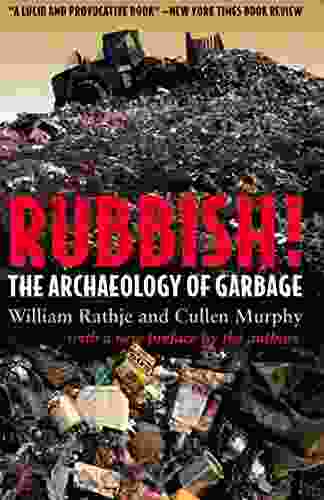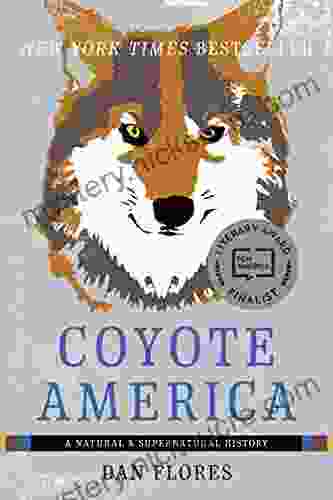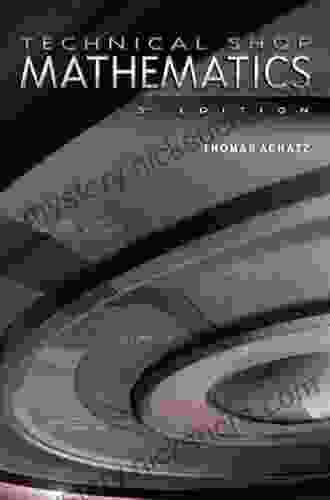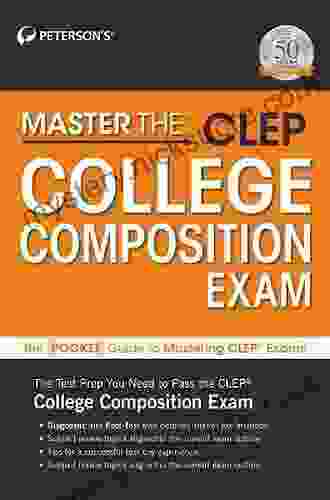Unveiling the Hidden Secrets of Garbage: The Archaeology of Trash

The discarded remains of human activities, often dismissed as mere waste, hold a treasure trove of information that can unlock the secrets of the past. Rubbish, trash, and garbage—these seemingly unremarkable byproducts of our daily lives—have become the focus of a fascinating field of archaeology that delves into the depths of refuse to uncover valuable insights into human behavior, consumption patterns, and environmental impacts.
Archaeology, traditionally associated with the study of ancient civilizations and archaeological sites, has expanded its horizons to embrace the examination of garbage and waste disposal practices. This subfield, known as the archaeology of garbage, or trash archaeology, provides a unique perspective on human history through the lens of discarded objects.
4.6 out of 5
| Language | : | English |
| File size | : | 8119 KB |
| Text-to-Speech | : | Enabled |
| Enhanced typesetting | : | Enabled |
| Word Wise | : | Enabled |
| Screen Reader | : | Supported |
| Print length | : | 279 pages |
Methods of Garbage Archaeology
Garbage archaeologists employ a range of methods to analyze and interpret the discarded materials they uncover. These methods include:
- Excavation and Sampling: Archaeologists carefully excavate and sample garbage deposits, extracting artifacts, organic materials, and other discarded items for further analysis.
- Sorting and Classification: The excavated materials are sorted and classified into different categories, such as food remains, packaging, textiles, and electronic waste.
- Material Analysis: Archaeologists analyze the materials of discarded objects, including their composition, manufacturing techniques, and age.
- Spatial Analysis: The spatial distribution of garbage deposits is examined to identify patterns of waste disposal and consumption.
- Historical and Contextual Analysis: The garbage is placed within its historical and cultural context, considering factors such as social class, economic status, and technological advancements.
Unveiling the Secrets of Garbage
The archaeology of garbage has provided invaluable insights into various aspects of human history and behavior.
Consumption Patterns
Garbage analysis reveals the consumption habits and dietary preferences of past societies. By examining the remains of food, packaging, and other household items, archaeologists can reconstruct menus, trace trade routes, and identify changes in consumerism over time.
Waste Disposal Practices
Garbage archaeologists study historical waste disposal practices to understand how societies have managed their discarded materials. The location, types, and quantities of garbage deposits provide clues about sanitation systems, recycling efforts, and the environmental impacts of waste disposal.
Environmental Impacts
The archaeology of garbage has also become a valuable tool for studying environmental changes and human impacts on the natural world. Discarded materials can contain pollutants, toxins, and other environmental indicators that provide insights into past climates, pollution levels, and the effects of human activities on ecosystems.
Social and Economic Status
Garbage can shed light on social and economic inequalities. The types and quantities of discarded objects can indicate differences in wealth, status, and access to resources within past societies.
Case Studies in Garbage Archaeology
Numerous case studies around the world have demonstrated the transformative power of garbage archaeology.
Landfill Archaeology at Fresh Kills, New York City
Fresh Kills Landfill, once the world's largest landfill, has become a site of extensive archaeological investigations. Archaeologists have uncovered a wide range of artifacts, including household items, electronic waste, and even human remains, providing insights into the consumption patterns and waste disposal practices of New York City residents.
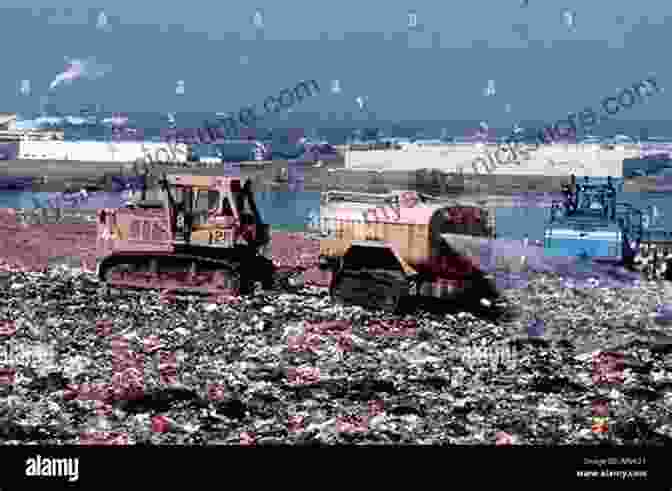
Medieval Waste Pits in London, England
Archaeological excavations of medieval waste pits in London have revealed a rich assemblage of organic materials, including food remains, textiles, and leather scraps. These deposits have provided valuable information about the daily lives, dietary habits, and waste management practices of medieval Londoners.
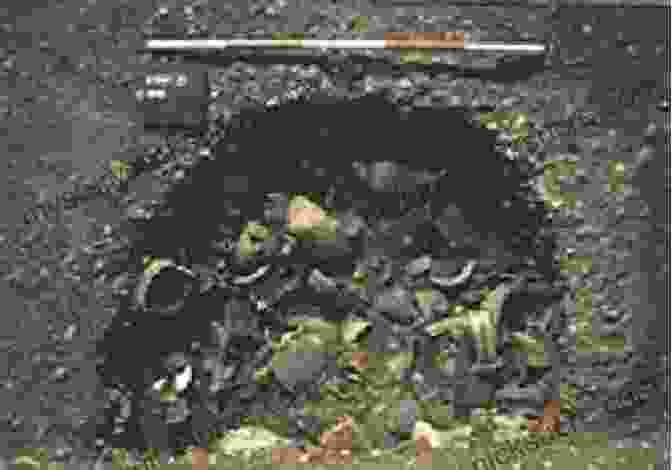
Native American Trash Mounds in the American Southwest
Trash mounds, or middens, created by Native Americans in the American Southwest contain a wealth of artifacts, including pottery shards, stone tools, and animal bones. These mounds have provided insights into the settlement patterns, hunting practices, and cultural traditions of ancient Native American communities.
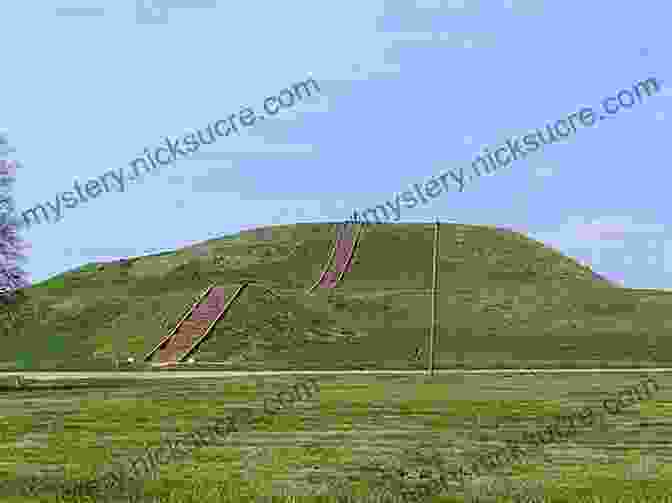
The archaeology of garbage has revolutionized our understanding of the past by providing a unique window into human behavior, consumption patterns, and environmental impacts. Through the meticulous analysis of discarded materials, garbage archaeologists have uncovered hidden stories, challenged assumptions, and shed light on the intricate relationship between humans and their environment.
As we face the challenges of waste disposal and environmental sustainability in the 21st century, the archaeology of garbage serves as a reminder of the enduring impact of our actions on the world around us. By understanding the past, we can strive for a more sustainable future where waste is valued as a resource and the environment is protected for generations to come.
4.6 out of 5
| Language | : | English |
| File size | : | 8119 KB |
| Text-to-Speech | : | Enabled |
| Enhanced typesetting | : | Enabled |
| Word Wise | : | Enabled |
| Screen Reader | : | Supported |
| Print length | : | 279 pages |
Do you want to contribute by writing guest posts on this blog?
Please contact us and send us a resume of previous articles that you have written.
 Fiction
Fiction Non Fiction
Non Fiction Romance
Romance Mystery
Mystery Thriller
Thriller SciFi
SciFi Fantasy
Fantasy Horror
Horror Biography
Biography Selfhelp
Selfhelp Business
Business History
History Classics
Classics Poetry
Poetry Childrens
Childrens Young Adult
Young Adult Educational
Educational Cooking
Cooking Travel
Travel Lifestyle
Lifestyle Spirituality
Spirituality Health
Health Fitness
Fitness Technology
Technology Science
Science Arts
Arts Crafts
Crafts DIY
DIY Gardening
Gardening Petcare
Petcare Michael Mewshaw
Michael Mewshaw Dave Bosanko
Dave Bosanko Matt Price
Matt Price Peterson S
Peterson S Romola Anderson
Romola Anderson Sarah Jacoby
Sarah Jacoby Sophie D Coe
Sophie D Coe Katie Fallon
Katie Fallon M E Brines
M E Brines Scott Mcmillion
Scott Mcmillion Bruce Van Brunt
Bruce Van Brunt Buddy Levy
Buddy Levy Dr Monika Chopra
Dr Monika Chopra Katherine D Kinzler
Katherine D Kinzler Winky Lewis
Winky Lewis Om Krishna Uprety
Om Krishna Uprety Victoria Honeybourne
Victoria Honeybourne Duncan Steel
Duncan Steel Henry Malone
Henry Malone Erin Macy
Erin Macy Mona Bijjani
Mona Bijjani Lianna Marie
Lianna Marie David Nathan Fuller
David Nathan Fuller Nick Littlehales
Nick Littlehales Robert Larrison
Robert Larrison Kat Davis
Kat Davis Nawuth Keat
Nawuth Keat Byron L Reeder
Byron L Reeder Charles Sanger
Charles Sanger Jason Runkel Sperling
Jason Runkel Sperling Sara Gaviria
Sara Gaviria Larry Larsen
Larry Larsen Declan Lyons
Declan Lyons Tricia Levenseller
Tricia Levenseller Bunmi Laditan
Bunmi Laditan Maha Alkurdi
Maha Alkurdi Mark Hansen
Mark Hansen Jennifer Appel
Jennifer Appel Cecil B Hartley
Cecil B Hartley Cal Newport
Cal Newport Jeff Scheetz
Jeff Scheetz Stian Christophersen
Stian Christophersen John Moren
John Moren John J Ratey
John J Ratey Olivier Doleuze
Olivier Doleuze Megan Miller
Megan Miller Trevelyan
Trevelyan Dounya Awada
Dounya Awada Terry Laughlin
Terry Laughlin Martha Finley
Martha Finley Laurie Notaro
Laurie Notaro Theodora Papatheodorou
Theodora Papatheodorou Ashley Christensen
Ashley Christensen Paul Lobo
Paul Lobo Upton Sinclair
Upton Sinclair James Miller
James Miller The Atavist
The Atavist Jared Diamond
Jared Diamond Kevin Howell
Kevin Howell James W Anderson
James W Anderson Oliver Sacks
Oliver Sacks Janet Evans
Janet Evans Malika Grayson
Malika Grayson Lina K Lapina
Lina K Lapina Clement Salvadori
Clement Salvadori Jen Howver
Jen Howver Healthfit Publishing
Healthfit Publishing Richard Bullivant
Richard Bullivant Pia Nilsson
Pia Nilsson Shmuel Goldberg
Shmuel Goldberg Ed Housewright
Ed Housewright Chris Bonington
Chris Bonington Phil Bourque
Phil Bourque Dan Romanchik Kb6nu
Dan Romanchik Kb6nu Pedro Urvi
Pedro Urvi Doug Cook
Doug Cook Peter Bodo
Peter Bodo Db King
Db King Don S Lemons
Don S Lemons Judith Merkle Riley
Judith Merkle Riley John H Falk
John H Falk Paul Murdin
Paul Murdin Nicholas Tomalin
Nicholas Tomalin Maren Stoffels
Maren Stoffels Sheri Morehouse
Sheri Morehouse Martina D Antiochia
Martina D Antiochia Marisa Peer
Marisa Peer Melissa Mullamphy
Melissa Mullamphy Collins Easy Learning
Collins Easy Learning Lynette Noni
Lynette Noni Sherri L Jackson
Sherri L Jackson Carrie Marie Bratley
Carrie Marie Bratley John R Mabry
John R Mabry Joseph Moss
Joseph Moss Dvora Meyers
Dvora Meyers Tim Glover
Tim Glover George Daniel
George Daniel Melanie Anne Phillips
Melanie Anne Phillips Richard Barrett
Richard Barrett Marcia Scheiner
Marcia Scheiner Kevin Panetta
Kevin Panetta Nick Tumminello
Nick Tumminello Jacob Erez
Jacob Erez Dan Flores
Dan Flores Robert Walker
Robert Walker Ransom Riggs
Ransom Riggs R Scott Thornton
R Scott Thornton Lisa Hopp
Lisa Hopp Jennifer L Scott
Jennifer L Scott Frank Muir
Frank Muir Hecateus Apuliensis
Hecateus Apuliensis Tyler Trent
Tyler Trent Charu C Aggarwal
Charu C Aggarwal Matthew Warner Osborn
Matthew Warner Osborn Sarah Ockwell Smith
Sarah Ockwell Smith Emily Writes
Emily Writes Anthony Camera
Anthony Camera Richard C Francis
Richard C Francis Dennis Adler
Dennis Adler Scott Hartshorn
Scott Hartshorn Marc Van Den Bergh
Marc Van Den Bergh Pat Rigsby
Pat Rigsby Justin Coulson
Justin Coulson Keith Brewer
Keith Brewer Dorothy Canfield Fisher
Dorothy Canfield Fisher Jack Disbrow Gunther
Jack Disbrow Gunther Max Prasac
Max Prasac Michael Tan
Michael Tan Caroline Manta
Caroline Manta Helen Webster
Helen Webster Huberta Wiertsema
Huberta Wiertsema Hibiki Yamazaki
Hibiki Yamazaki Martin Davies
Martin Davies Lottie Bildirici
Lottie Bildirici John Grehan
John Grehan Meriwether Lewis
Meriwether Lewis Richard Harding Davis
Richard Harding Davis Sue Elvis
Sue Elvis Thomas Achatz
Thomas Achatz Dave Rearick
Dave Rearick Freya Pickard
Freya Pickard Nicolas Bergeron
Nicolas Bergeron Craig Callender
Craig Callender Sam Priestley
Sam Priestley Chad Eastham
Chad Eastham Tyler Burt
Tyler Burt Jim Supica
Jim Supica Cornelia Pelzer Elwood
Cornelia Pelzer Elwood David Wilber
David Wilber Richard Drake
Richard Drake Darcy Lever
Darcy Lever Thomas Carothers
Thomas Carothers William M Baum
William M Baum Ivar Dedekam
Ivar Dedekam Sarah Berman
Sarah Berman Matt Racine
Matt Racine J R Harris
J R Harris Pamela Weintraub
Pamela Weintraub Ralph Galeano
Ralph Galeano Ken Sande
Ken Sande Barbara Acello
Barbara Acello Mathew Orton
Mathew Orton Wyatt Mcspadden
Wyatt Mcspadden Elizabeth Dupart
Elizabeth Dupart Nick Gamis
Nick Gamis Carmen Davenport
Carmen Davenport Albert Rutherford
Albert Rutherford Elena Paige
Elena Paige Kruti Joshi
Kruti Joshi Trevor Thomas
Trevor Thomas Ronald T Potter Efron
Ronald T Potter Efron Steve Barrett
Steve Barrett Jonathan T Gilliam
Jonathan T Gilliam Lsat Unplugged
Lsat Unplugged Matthew Marchon
Matthew Marchon J D Williams
J D Williams Jill Angie
Jill Angie Lois Lowry
Lois Lowry Frederick Jackson Turner
Frederick Jackson Turner Tom Cunliffe
Tom Cunliffe Michael A Tompkins
Michael A Tompkins Sophie Messager
Sophie Messager Jane Brocket
Jane Brocket Leslie A Sams
Leslie A Sams Linda Rosenkrantz
Linda Rosenkrantz Tibor Rutar
Tibor Rutar Robert D Gibbons
Robert D Gibbons Philippe Karl
Philippe Karl Heather Jacobson
Heather Jacobson Wayne Coffey
Wayne Coffey Lucy Cooke
Lucy Cooke Issai Chozanshi
Issai Chozanshi Eugenia G Kelman
Eugenia G Kelman Karen J Rooney
Karen J Rooney Richard W Voelz
Richard W Voelz Carlos I Calle
Carlos I Calle Scott Mactavish
Scott Mactavish Norman Thelwell
Norman Thelwell Zachery Knowles
Zachery Knowles Julietta Suzuki
Julietta Suzuki Jack Canfield
Jack Canfield John M Marzluff
John M Marzluff Dina Nayeri
Dina Nayeri Eric R Dodge
Eric R Dodge Rebecca Musser
Rebecca Musser Ivy Hope
Ivy Hope Scott Cawthon
Scott Cawthon Marla Taviano
Marla Taviano Meg Cabot
Meg Cabot Ron Senyor
Ron Senyor Narain Moorjani
Narain Moorjani Neville Goddard
Neville Goddard Kevin Houston
Kevin Houston Elaine Tyler May
Elaine Tyler May Eric P Lane
Eric P Lane Donna Goldberg
Donna Goldberg Jessica Holsman
Jessica Holsman Elizabeth May
Elizabeth May Natasha Daniels
Natasha Daniels Bruce Watt
Bruce Watt Greg W Prince
Greg W Prince David Savedge
David Savedge Valliappa Lakshmanan
Valliappa Lakshmanan Ashley Eckstein
Ashley Eckstein Kacen Callender
Kacen Callender Wilhelm Reich
Wilhelm Reich Suzanne Young
Suzanne Young Mark Stavish
Mark Stavish Troy Horne
Troy Horne Francis Glebas
Francis Glebas Jennifer Rose
Jennifer Rose Kerry H Cheever
Kerry H Cheever Jeff Belanger
Jeff Belanger Gregory A Kompes
Gregory A Kompes Nicola Yoon
Nicola Yoon Carole Bouchard
Carole Bouchard Mary Pagones
Mary Pagones William Wood
William Wood Thomas Daniels
Thomas Daniels Fmg Publications Special Edition
Fmg Publications Special Edition Joyceen S Boyle
Joyceen S Boyle C M Carney
C M Carney Tim Freke
Tim Freke Mark Stanton
Mark Stanton Michael Chatfield
Michael Chatfield John H Cunningham
John H Cunningham Bruce Sutherland
Bruce Sutherland Joel Best
Joel Best Melissa A Priblo Chapman
Melissa A Priblo Chapman Maurice J Thompson
Maurice J Thompson E W Barton Wright
E W Barton Wright Lewis Kirkham
Lewis Kirkham John Burroughs
John Burroughs Fern Schumer Chapman
Fern Schumer Chapman Ken Schwaber
Ken Schwaber David Cannon
David Cannon Elizabeth Laing Thompson
Elizabeth Laing Thompson Joanne Kimes
Joanne Kimes Donna R Causey
Donna R Causey K C Cole
K C Cole Shawna Richer
Shawna Richer Rand Cardwell
Rand Cardwell Susan Frederick Gray
Susan Frederick Gray J R Rain
J R Rain Lynn Butler Kisber
Lynn Butler Kisber Michelle Travis
Michelle Travis William L Sullivan
William L Sullivan Leah Hazard
Leah Hazard Mary C Townsend
Mary C Townsend Thomas Deetjen
Thomas Deetjen Stacey Rourke
Stacey Rourke Kathy Woods
Kathy Woods Veronica Eden
Veronica Eden Mike X Cohen
Mike X Cohen Howard E Mccurdy
Howard E Mccurdy Helen Zuman
Helen Zuman Douglas Preston
Douglas Preston Stella Cottrell
Stella Cottrell Chris Morton
Chris Morton Dick Hannula
Dick Hannula Earl G Williams
Earl G Williams Paul A Offit
Paul A Offit Stephen King
Stephen King Guy Grieve
Guy Grieve Jim West
Jim West Veronica Roth
Veronica Roth Simon A Rego
Simon A Rego Nedu
Nedu Rita Golden Gelman
Rita Golden Gelman Steven Kerry Brown
Steven Kerry Brown Silvia Dunn
Silvia Dunn Steven W Dulan
Steven W Dulan L W Jacobs
L W Jacobs Celeste Headlee
Celeste Headlee Carrie Hope Fletcher
Carrie Hope Fletcher Marc Bona
Marc Bona Mcgraw Hill
Mcgraw Hill Della Ata Khoury
Della Ata Khoury Robert Moor
Robert Moor Robert Edward Grant
Robert Edward Grant E Ink Utilizer
E Ink Utilizer Jess J James
Jess J James Orangepen Publications
Orangepen Publications Kathleen Flinn
Kathleen Flinn Sterling Test Prep
Sterling Test Prep Kaplan Test Prep
Kaplan Test Prep Tom Bass
Tom Bass Lisa Feldman Barrett
Lisa Feldman Barrett C F Crist
C F Crist Oprah Winfrey
Oprah Winfrey Michael Lear Hynson
Michael Lear Hynson Gary Lewis
Gary Lewis Robert Garland
Robert Garland Ian Tuhovsky
Ian Tuhovsky Craig Martelle
Craig Martelle Vincent Chidindu Asogwa
Vincent Chidindu Asogwa Jamie Marich
Jamie Marich Roger Marshall
Roger Marshall Meghan Daum
Meghan Daum Caitlyn Dare
Caitlyn Dare Matt Mullenix
Matt Mullenix Shea Ernshaw
Shea Ernshaw Joseph Correa
Joseph Correa Elizabeth Anne Wood
Elizabeth Anne Wood Mark Young
Mark Young Tina Schindler
Tina Schindler Katharine Mcgee
Katharine Mcgee Steve Guest
Steve Guest Brandy Colbert
Brandy Colbert Leslie R Schover
Leslie R Schover Lingo Mastery
Lingo Mastery Arrl Inc
Arrl Inc John Jamieson
John Jamieson Michael Gurian
Michael Gurian Ron Rapoport
Ron Rapoport Robert A Cutietta
Robert A Cutietta William Rathje
William Rathje Rob Pate
Rob Pate Marco Wenisch
Marco Wenisch Gary Mayes
Gary Mayes Kyra Phillips
Kyra Phillips Elmer Keith
Elmer Keith Jim Al Khalili
Jim Al Khalili Hugh Aldersey Williams
Hugh Aldersey Williams Tamara Ferguson
Tamara Ferguson C S Lewis
C S Lewis Lauren Manoy
Lauren Manoy Daniel Prince
Daniel Prince Paul Rabinow
Paul Rabinow Martina Mcbride
Martina Mcbride Bruce Maxwell
Bruce Maxwell Vladimir Lossky
Vladimir Lossky Michael Blastland
Michael Blastland Ira K Wolf
Ira K Wolf Mo Gawdat
Mo Gawdat Nikki Carroll
Nikki Carroll Natasha Ngan
Natasha Ngan Jeffrey L Kohanek
Jeffrey L Kohanek Stephen Harrison
Stephen Harrison Emt Basic Exam Prep Team
Emt Basic Exam Prep Team Shelby Hailstone Law
Shelby Hailstone Law Emma Warren
Emma Warren Samantha De Senna Fernandes
Samantha De Senna Fernandes James Beard
James Beard J Maarten Troost
J Maarten Troost Jimmy Chin
Jimmy Chin Scarlett V Clark
Scarlett V Clark Maria Van Noord
Maria Van Noord Jim Wiese
Jim Wiese Stedman Graham
Stedman Graham Rick Trickett
Rick Trickett Ruthellen Josselson
Ruthellen Josselson Max Lugavere
Max Lugavere Susan Orlean
Susan Orlean Charles Salzberg
Charles Salzberg William Ellet
William Ellet Skip Lockwood
Skip Lockwood Kendall Rose
Kendall Rose Jim Warnock
Jim Warnock Michael D Alessio
Michael D Alessio Aaron Reed
Aaron Reed Jessica Howard
Jessica Howard James Goi Jr
James Goi Jr Joanne V Hickey
Joanne V Hickey Dory Willer
Dory Willer Valerie Poore
Valerie Poore Tanya Hackney
Tanya Hackney Roger J Davies
Roger J Davies Elisabeth Elliot
Elisabeth Elliot Leah Zani
Leah Zani Tey Meadow
Tey Meadow C J Archer
C J Archer Dian Olson Belanger
Dian Olson Belanger Warwick Deeping
Warwick Deeping Ian Leslie
Ian Leslie Sammy Franco
Sammy Franco Lily Raff Mccaulou
Lily Raff Mccaulou Jasmine Shao
Jasmine Shao Matt Baglio
Matt Baglio Creek Stewart
Creek Stewart Philip Purser Hallard
Philip Purser Hallard David Eagleman
David Eagleman Shaunti Feldhahn
Shaunti Feldhahn Chris Pountney
Chris Pountney Deirdre V Lovecky
Deirdre V Lovecky Kindle Edition
Kindle Edition John Kretschmer
John Kretschmer Denise May Levenick
Denise May Levenick Pam Flowers
Pam Flowers Christine Mari Inzer
Christine Mari Inzer William Ian Miller
William Ian Miller Konstantinos Mylonas
Konstantinos Mylonas Sandra Niche
Sandra Niche Bryce Carlson
Bryce Carlson Max Lucado
Max Lucado Tim S Grover
Tim S Grover Ronit Irshai
Ronit Irshai Albert Jeremiah Beveridge
Albert Jeremiah Beveridge Sarah Prager
Sarah Prager Susan Garcia
Susan Garcia Emily Lowry
Emily Lowry Law School Admission Council
Law School Admission Council Peter J D Adamo
Peter J D Adamo John Flanagan
John Flanagan Edward Humes
Edward Humes Ned Feehally
Ned Feehally Sheila A Sorrentino
Sheila A Sorrentino Dr Tommy John
Dr Tommy John Douglas P Fry
Douglas P Fry David Tanis
David Tanis Jesse Romero
Jesse Romero Kelly Rowland
Kelly Rowland Niels H Lauersen
Niels H Lauersen W D Wetherell
W D Wetherell Julia Ann Clayton
Julia Ann Clayton Shyima Hall
Shyima Hall Maxine A Goldman
Maxine A Goldman Fiona Beddall
Fiona Beddall Nicola S Dorrington
Nicola S Dorrington Luc Mehl
Luc Mehl Ivan Gridin
Ivan Gridin Tony E Adams
Tony E Adams R L Medina
R L Medina Richard Henry Dana
Richard Henry Dana Cathy Glass
Cathy Glass Sonia Shah
Sonia Shah Paige Powers
Paige Powers Sarah Baker
Sarah Baker Julie Golob
Julie Golob John Vince
John Vince Sallyann Beresford
Sallyann Beresford Phil Williams
Phil Williams Cassandra Mack
Cassandra Mack Lily Field
Lily Field Leon Speroff
Leon Speroff Lee Alan Dugatkin
Lee Alan Dugatkin Charles Staley
Charles Staley Sylvia Williams Dabney
Sylvia Williams Dabney David Martin
David Martin Diane Lindsey Reeves
Diane Lindsey Reeves Graham Hancock
Graham Hancock Caleb J Tzilkowski
Caleb J Tzilkowski Lew Freedman
Lew Freedman S M Kingdom
S M Kingdom Joe Baker
Joe Baker Winslow Tudor
Winslow Tudor Rowena Bennett
Rowena Bennett Jim Kempton
Jim Kempton Kevin A Morrison
Kevin A Morrison Carol Inskipp
Carol Inskipp Nigel Cawthorne
Nigel Cawthorne Heather Balogh Rochfort
Heather Balogh Rochfort Cameron Mcwhirter
Cameron Mcwhirter Bruce W Harris
Bruce W Harris Bryan Litz
Bryan Litz Erin Beaty
Erin Beaty Vivian Foster
Vivian Foster Graham Norton
Graham Norton Destiny S Harris
Destiny S Harris Dianne Maroney
Dianne Maroney Simon Michael Prior
Simon Michael Prior Don Allen Jr
Don Allen Jr Lee Jackson
Lee Jackson
Light bulbAdvertise smarter! Our strategic ad space ensures maximum exposure. Reserve your spot today!

 Juan ButlerUnveiling the Secrets of Hoodoo Essential Oils and Powders: A Comprehensive...
Juan ButlerUnveiling the Secrets of Hoodoo Essential Oils and Powders: A Comprehensive... Natsume SōsekiFollow ·18.6k
Natsume SōsekiFollow ·18.6k Glenn HayesFollow ·7.8k
Glenn HayesFollow ·7.8k Derrick HughesFollow ·19k
Derrick HughesFollow ·19k Rex HayesFollow ·15k
Rex HayesFollow ·15k Jesus MitchellFollow ·5.8k
Jesus MitchellFollow ·5.8k Duane KellyFollow ·13.4k
Duane KellyFollow ·13.4k Kirk HayesFollow ·15.3k
Kirk HayesFollow ·15.3k Harold PowellFollow ·3.7k
Harold PowellFollow ·3.7k

 Henry David Thoreau
Henry David ThoreauHow To Bake In Unique Way: Unleash Your Culinary...
Baking is an art form that transcends the...

 F. Scott Fitzgerald
F. Scott FitzgeraldAcademic Magic: Unveil the Secrets of The Last Magus
Delve into a Realm of...
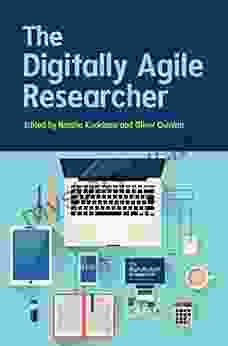
 John Green
John GreenThe Digitally Agile Researcher in UK Higher Education:...
In the rapidly...
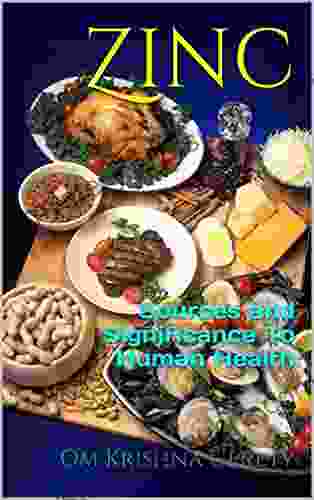
 George Orwell
George OrwellZinc: Sources And Significance To Human Health
Zinc, an essential trace mineral, plays a...
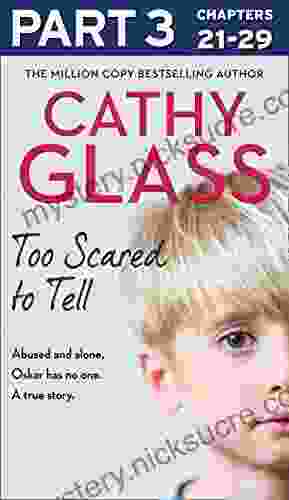
 Mario Simmons
Mario SimmonsToo Scared to Tell: A Harrowing and Thought-Provoking...
In the realm...
4.6 out of 5
| Language | : | English |
| File size | : | 8119 KB |
| Text-to-Speech | : | Enabled |
| Enhanced typesetting | : | Enabled |
| Word Wise | : | Enabled |
| Screen Reader | : | Supported |
| Print length | : | 279 pages |


